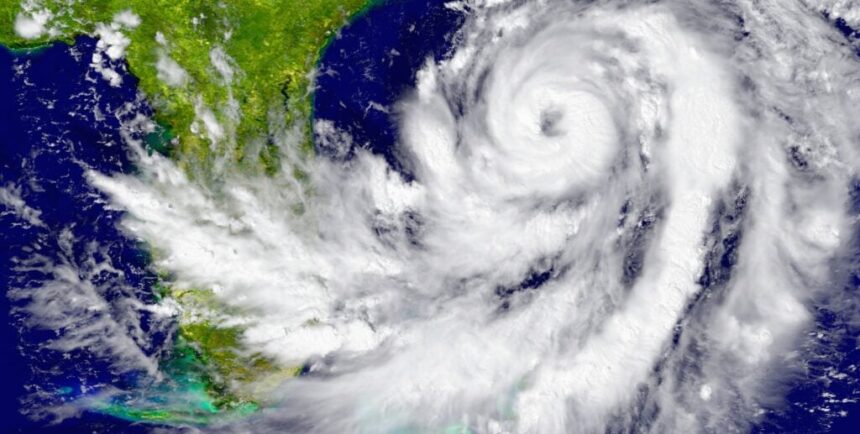This article is presented by Steadily. Read our editorial guidelines for more information.
Your offer was just accepted on a beautiful property in Central Florida just a few miles from the coast. The income you will make from this short-term rental will fund your early retirement plans. Everything is humming along relatively smoothly—until you get your quote back for the insurance. Now, you feel like you just got punched in the gut.
The cost of the insurance will certainly take a chunk out of your profits, but after talking to an agent, you count yourself lucky because had you been located just a few miles south, you wouldn’t even be able to find a carrier to cover you.
What’s going on in Florida? What about California and Texas? If it seems like finding affordable insurance in some areas is getting harder and harder, your thoughts are correct.
Capacity is limited, and prices are going up. Many carriers are pulling out of markets entirely. But why?
What’s Happening in the Insurance Market?
Let’s break this down with some insurance basics. Insurance companies have to make a profit too. It’s all a balancing act of charging the right premium for the right risk so that, on the whole, the insurance company is able to collect enough premiums to pay out all the claims they owe plus their operating expenses and still have some left for a profit. Much like you, as a real estate investor, when you calculate your ROI after all of your expenses, are asking yourself, “Is it worth it”? If an insurance company has to pay out more in claims than they make on premiums year over year, why even bother? When this happens, you see carriers pulling out of a market entirely.
Overall, it’s relatively straightforward to project the statistical likelihood of claims from typical things like housefires, water damage, theft, etc. But in recent years, there has been a proliferation of catastrophic events. Who could have planned for 463,000 acres of encompassing fire to take out 14,000 structures in Northern California in one fell swoop? Who could have predicted Hurricane Harvey would flood 300,000 structures in Houston with 50 inches of rainfall, causing $120 billion in damage? It seems like one thing after another these days, and insurance companies can’t keep up with the catastrophic losses.
On top of the actual catastrophic events, there’s the added cost from unscrupulous contractors and attorneys who take advantage of policyholders and insurance companies by coming in years after an event and convincing an unwitting insured to sign over their benefits so that they can try to squeeze the insurance companies for more money than they should have paid. For the record, the owner receives only a fraction of these funds. The majority goes to the contractors and attorneys. When this happens at scale, everyone (including the owner) bears the cost of these things for years to come in the form of increased premiums and reduced access to insurance.
You might not realize it, but insurance companies have to buy insurance too. It’s called reinsurance. In the last few years, the reinsurance market has been decimated. Industry experts say they’ve never seen the property market as bad as it is today. Reinsurance companies are losing money because of heavy property losses around the world, which leads them to increase the cost of reinsurance or, worse, pull capacity completely. If an insurance company’s premiums go up, everything underneath it must also go up. If they can’t get reinsurance at all, then
that’s when insurance companies start announcing their exit from a market—they’ve been left with no choice.
What’s Causing Insurance Companies to Leave Markets?
Why isn’t it as simple as the insurance company just raising everyone’s premiums? Why can’t we all just pay a little bit more for a while to get through the toughest part? Well, to some extent, that’s what we’re going to do, but in many cases, an insurance company can’t adjust its rates to account for its own higher cost of doing business even when they want to. That’s because admitted insurance companies are regulated by the state governments. They have to file even the smallest rate change with the state’s department of insurance (DOI) and wait for approval. State DOIs are often backlogged, so filings can take months (even a year or more in some states) to get reviewed, let alone approved. All the while, the insurance company is stuck with pricing that is no longer profitable. By the time a rate change gets approved, it may be too late, or the new rates are already outdated and need another one.
Let’s talk a little bit about the problem areas of insurance so that you can be prepared when you’re looking to acquire your next property.
Corruption and Greed
The entire state of Florida is a tough place when it comes to insurance. 14 insurance companies are currently in liquidation, and most of those went belly up in the last year. Florida Citizens, intended to be the market of last resort, is currently the largest insurer of property in the state. You may not realize it, but if Citizens is unable to pay their claims, they can assess every property owner a portion. Not just property owners insured with Citizens—every property owner in the state. The insurance crisis isn’t even driven by hurricane claims. It’s driven mainly by fraud and gouging, even during years without storms. If you must buy property in Florida, your best bet is to focus on properties that are inland and in great condition. Anything distressed, coastal, or in South Florida will be problematic for insurance.
Wildfires
Wildfire is the main concern in large parts of California, Colorado, Oregon, and Washington. That big beautiful cabin in the mountains may have an awesome view, but a wooden structure surrounded by trees miles from the nearest fire station is an insurance underwriter’s worst nightmare. Those premiums are going to be pretty high to balance out the risk.
Tornadoes
If you’re purchasing a property in Tornado Alley, you can also expect pretty high premiums and special high deductibles on wind. I’m looking at you, Oklahoma, Missouri, Nebraska, Iowa, and Texas.
Isn’t this what insurance was meant for? Sure. But imagine you and your neighbors decide to pool your money together to mutually self-insure all of your homes on the block. You’d have plenty if one or two houses burned down, but if a tornado takes out the entire street, you’ve got a problem. The idea of buying all of your properties in the same neighborhood might seem more convenient for property maintenance, but an insurance underwriter isn’t going to be very excited about it because it’s aggregating the risk.
Storms
As you’d expect, any areas in the southeast within several miles of the coast will be problematic when it comes to hurricanes. Think Louisiana, Alabama, Georgia, and the Carolinas.
Texas is a challenge because it’s exposed to all of the things. In the south, it’s exposed to hurricanes and flooding. In the north, it’s exposed to tornados. In the west, it’s exposed to wildfire. And just for fun, let’s mix in a freak ice storm in the middle. Prices are going up, and carriers are pulling out.
If you have flexibility on where you acquire properties, you might consider locations that aren’t hot spots for insurance right now, but coincidentally, those are all great vacation spots, so it’s understandable why investors flock to these areas. If you’re sold on the area, consider the increased cost of insurance as a cost of doing business and factor that into your ROI.
Final Thoughts
That’s a whole lot of doom and gloom. Is there light at the end of the tunnel? We hope so! Today we’re in one of the hardest markets the insurance industry has ever seen, but history tells us that the pendulum will eventually swing back, and the markets will soften up.
It’s going to be tough for a while until that happens. If you’re in one of these tough geographic areas and you have an insurance company willing to offer you a renewal, you might want to consider settling in for the ride even if your premiums are going up. As a consumer, play a fair game when you have a claim, work with the adjuster to be paid what is fair, and avoid engaging with the bad actors who are looking to gouge and turn a profit for themselves off of your insurance policy. Maintain your rental properties in good condition, which will help mitigate the everyday perils, even if you can’t control the natural disasters that may come through. It might be the difference between you being able to get insurance or not.
Steadily has built our brand on being the solution for real estate investors across the country, so we’re very well versed on the challenges in every geography. We’ve diversified our partner markets so that we don’t have all of our eggs in one basket when capacity constraints cause carriers to pull out. We’re also committed to placing the right risk with the right carrier so that the customer can get a policy that is sustainable and the insurance company is willing to stay in business for a long time. We all have to work together in the great insurance circle of life.
This article is presented by Steadily

Steadily is America’s best-rated rental property insurance provider. Get coverage online in minutes for all property types and all policy durations, including short-term rentals. Visit Steadily.com to get a free quote today.
Note By BiggerPockets: These are opinions written by the author and do not necessarily represent the opinions of BiggerPockets.








